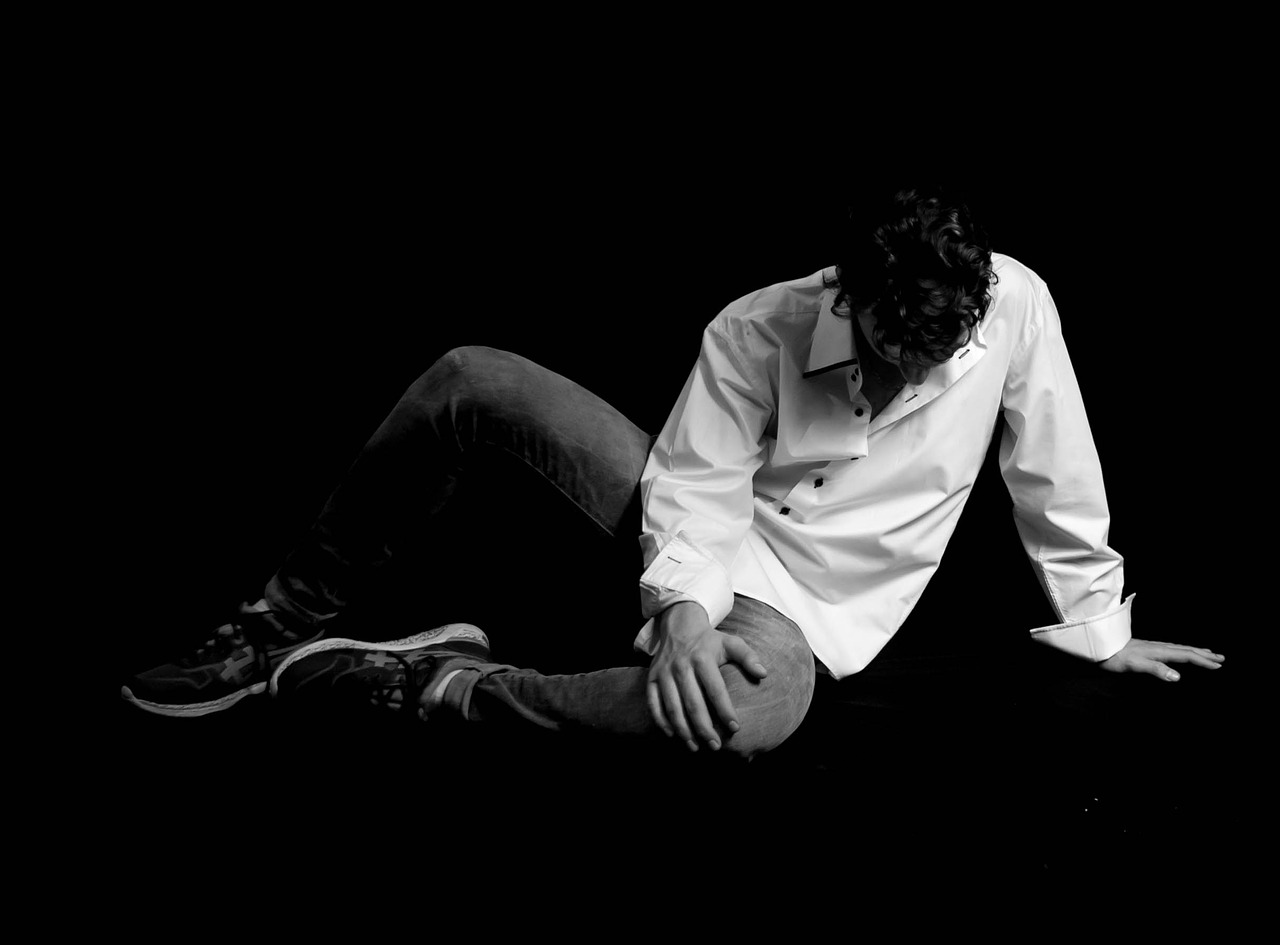Dependence on both heroin and other opioid drugs can happen quickly. Overdose can occur when mixing heroin with alcohol and other opioid drugs, especially fentanyl.
Is Heroin an Opioid? Facts About Heroin and Opioids
You may have heard about the opioid crisis, and could be wondering, what are opioids, and is heroin an opioid? The dangers of heroin and opioids continue to take a toll on America. In 2020, more than 70,000 people in the U.S. died from opioid overdoses, with heroin accounting for 13,000 of those deaths.1 Having a better understanding of heroin and opioids may help you avoid addiction or encourage you to seek help if you need it.
In This Article:
- What Are Opioids, and Is Heroin an Opioid?
- What Are the Effects of Heroin?
- What Are the Dangers of Long-term Heroin Use?
- Heroin vs. Opioid Medications
- Heroin Use and Overdose
- Help for Heroin Addiction
What Are Opioids, and Is Heroin an Opioid?
Opioids are a class of drugs that interact with the opioid receptors in your brain.2 These receptors are connected to your brain’s reward system. When stimulated, the opioid receptors create a loop that links the stimulus to pleasure. It’s this system that makes opioid drugs very addictive.2
Some opioids are prescribed as medications. These include oxycodone (OxyContin), hydrocodone (Vicodin), codeine, morphine, and others. Heroin is also an opioid but it has no medicinal purpose. For this reason, it is listed as a Schedule 1 narcotic by the U.S. Drug Enforcement Administration (DEA). Schedule 1 drugs are substances that have a high potential for abuse and no accepted medical use.3
Prescription opioid medications are classified as Schedule 2 drugs because they do have an accepted medical use, but they also have a high potential for abuse that can lead to addiction. 3 Several types of Schedule 2 opioid medications account for a large proportion of overdose deaths. These include fentanyl, oxycodone, morphine, methadone, and hydrocodone.4
Regardless of intended purpose, opioids and heroin create a euphoric ‘reward’ experience in your brain.2 Opioid medications may be safe if you used them as prescribed by your doctor for a short period. However, if using them for two weeks or longer, you may become physically dependent on them.5
What Are the Effects of Heroin?

Heroin and opioid misuse can lead to depression, withdrawal from life, and many other harmful effects.
Heroin is a highly addictive, illegal drug derived from certain varieties of poppy plants. Pure heroin is a white powder that is made primarily in South America and areas of Asia and smuggled into the U.S. It is normally snorted or smoked. Black tar heroin is made mostly in Mexico. The dark color comes from crude processing methods that leave behind impurities. Black tar heroin is usually diluted and injected into the body.6
After heroin is snorted, smoked, or injected into the body, it is converted to morphine, binding to opioid receptors in the brain and nervous system.6 The effects of heroin and opioids include blocking pain, increasing feelings of pleasure, and slowing down breathing and heart function.6 During an overdose, a shortage of oxygen to the brain can lead to coma, permanent brain damage, or death.6
People who struggle with heroin use will experience two stages of addiction—the short-term highs and the long-term lows.
Initially, heroin opioid use delivers a “rush” of pleasure, also called a euphoric high. Still, even in the short term, taking heroin can trigger unwanted side effects such as:7
- Dry mouth
- Warm flushing of the skin
- Heavy arms and legs
- Nausea
- Vomiting
- Severe itching
- Brain fog
- Drifting between a conscious and semiconscious state
Over time, heroin use may result in more severe side effects. Long-term heroin use can lead to:8
- Insomnia
- Collapsed veins (if you regularly inject heroin)
- Damaged nasal tissue (for those who snort heroin)
- Valve and heart lining infections
- Abscesses (swollen, pus-filled areas of skin)
- Chronic constipation
- Stomach cramps
- Kidney and liver disease
- Lung disease and complications
- Depression
- Antisocial personality disorder
- Sexual dysfunction for men
- Irregular menstrual cycles for women
What Are the Dangers of Long-term Heroin Use?
Repeated use of heroin changes the physiology of the brain, creating imbalances in the body’s neuronal and hormonal systems.6 Studies have shown that prolonged heroin use results in deterioration of the brain’s white matter.9 This may detrimentally affect a person’s ability to control their behavior, respond to stressful situations, and make decisions. 9 During an overdose, a shortage of oxygen to the brain can lead to coma, permanent brain damage, or death.8
People who use heroin and opioids through injection are also at risk of contracting infectious diseases such as hepatitis and HIV/AIDS, if sharing non-sterile needles.6 Use of heroin during pregnancy can lead to a baby born with fetal effects.6
Since 2007, heroin use in the U.S. has steadily increased. In 2016, approximately 948,000 Americans reported using heroin in the past year, and 626,000 met the criteria for heroin use disorder.7 The age group driving this increase the most is 18–25 year-olds.7
It appears this trend is related to the widespread misuse of opioid pain killers in the U.S.6 After becoming dependent on opioid medications, many turn to the more readily available—and more affordable option—heroin.6
Heroin Dependency and Addiction
Heroin dependency can happen quickly, after just two weeks of using the drug.5 Dependency means you will experience withdrawal symptoms, which normally occur 24-48 hours after the last dose.5
Signs of heroin and opioid withdrawal include:5
- Restlessness
- Muscle and bone pain
- Problems sleeping
- Diarrhea
- Vomiting
- Cold flashes
- Goosebumps
- Leg movement you can’t control
- Severe cravings for heroin
Using heroin and opioids regularly can also cause you to develop tolerance.6 This is when you need to take larger and more frequent doses of heroin to experience the high you used to get from smaller, less frequent doses.
Once you become dependent on heroin or other opioid drugs, you may develop an addiction, which is defined clinically as an opioid use disorder (OUD). This is when having and using heroin becomes the central focus of your life. A person is diagnosed as having an OUD when some of the following signs are present within a 12-month period:10
- Taking heroin in larger amounts or for longer than prescribed
- Wanting to reduce or stop using heroin but not managing to
- Spending a lot of time getting, using, or recovering from heroin use
- Having cravings and urges to use heroin
- Experiencing withdrawal effects when stopping heroin use
- Needing to use heroin in larger amounts to attain the effects your experienced when you first started using it
- Not living up to obligations at work, home, or school because of heroin use
- Continuing to use heroin despite the problems it causes problems in relationships
- Giving up important social, occupational, or recreational activities because of heroin use
- Using heroin even in situations where it is dangerous to do so
- Continuing to use heroin when you know you have a physical or psychological problem that could have been caused or made worse by the drug
An OUD diagnosis is ranked by severity according to the number of symptoms listed above that a person has. Having 2-3 symptoms indicates a mild OUD, 4-5 symptoms indicates a moderate OUD, and 6 or more symptoms indicates a severe OUD.10
Heroin vs. Opioid Medications
Because heroin and opioid medications have the same effects on the body, more people are misusing both types of drugs.6 Some people may turn to heroin after their prescription for an opioid medication runs out and they are unable obtain more prescriptions. Evidence suggests that almost 80% of people who have used heroin previously misused prescription opioid medications.11
On the other hand, some people may start with heroin and turn to stronger opioids, such as fentanyl, after developing a tolerance to heroin. This is indicated by studies showing that about 33% of people entering opioid addiction treatment misused heroin before misusing opioid medications.12
The severity of effects can change when using heroin vs. opioid substances. Turning to stronger opioid drugs such as fentanyl is even more risky than using heroin. Fentanyl, a synthetic opioid often made illegally, is 50 times more potent than heroin.7 This is one reason fentanyl has become the leading cause of drug overdose in the U.S. In 2020, 57,000 people in the U.S. died from overdoses involving fentanyl.13 Some of these deaths are likely due to dealers cutting drugs like heroin or cocaine with fentanyl, since all of these substances come in the form of white powder. In such cases, it’s impossible for a buyer to know if heroin has been mixed with more potent drugs such as fentanyl.3
Heroin Use and Overdose
While fentanyl has become the No. 1 drug to cause overdose deaths, heroin is close behind. In 2019, nearly a third of all overdose deaths in the U.S. involved heroin.14
When a person overdoses on heroin, it means the amount of heroin they have used is more than their body can manage, resulting in death or a life-threatening condition. During an overdose, a shortage of oxygen to the brain can lead to coma, permanent brain damage, or death.6 Mixing heroin with alcohol, other opioid drugs such as fentanyl, or other drugs including benzodiazepines can also lead to overdose more easily than many people may realize.6
What does a heroin overdose look like? After using too much heroin or opioid drugs, your breathing may slow or even stop. This cuts off oxygen to your brain—a condition known as hypoxia. So, even if you survive an overdose, you may emerge with permanent damage to your brain and nervous system.8 Alternatively, you may remain in a coma due to the effects of hypoxia.8
An overdose from heroin and opioids can be treated, if done immediately, with a medication called naloxone. It is available as an injectable medication, used by emergency medical personnel, or as a nasal spray, available to consumers. In either form, this medication binds to opioid receptors, which blocks the effects of heroin or other opioids, reversing overdose symptoms.15
Naloxone in the nasal spray form is available in some states without a prescription. If the state you live in requires a prescription, ask your primary doctor for a naloxone prescription if you are concerned that you or a loved one may be at risk for opioid overdose. Be sure you know in advance how to properly use naloxone. Keep in mind that naloxone only works on overdoses caused by heroin or other opioids.15
More than one dose of naloxone may be necessary to help you breathe after an overdose, and other medical care may be required. For these reasons, always seek immediate emergency medical care for an overdose.
Help for Heroin Addiction
If you struggle with heroin and opioid use, help is available. Today, a range of effective treatment options, including medication and different forms of therapy, are used to help people stop using heroin.8 Because of the variety of opioid and heroin treatment options available, you can find treatment that meets your specific needs and preferences.
Medications for Heroin Addiction
To help you through the withdrawal process, when detoxing from heroin and opioids, your treatment specialist may prescribe lofexidine.8 This is an FDA-approved, non-opioid medicine that reduces opioid withdrawal symptoms.8
There are also opioid agonist medicines, such as buprenorphine and methadone, that can help you stop using heroin.8 These medications also bind to your brain’s opioid receptors, but they do so in a weaker way than heroin, so they may reduce your heroin cravings and lessen your withdrawal symptoms.8
Alternatively, your doctor may recommend naltrexone, a medication that blocks opioid receptors.8 When you take naltrexone, opioid drugs will not affect your body.
Studies show that buprenorphine/naloxone combinations are similarly effective to solo use of extended-release naltrexone.8,15
Behavioral Therapy During Opioid Addiction Treatment
In addition to medications, your treatment program may involve behavioral therapies for heroin addiction. Two popular methods often used in addiction treatment are cognitive behavioral therapy (CBT) and contingency management.8
With CBT, you learn to change your thoughts about drug use and your behaviors surrounding heroin misuse. In this way, you can learn to effectively manage your drug-use triggers so that you don’t relapse in times of stress.8
With contingency management, you can earn motivational incentives, such as vouchers or small cash rewards, when you engage in positive behaviors by avoiding heroin and opioid use to maintain sobriety.8
A variety of other types of therapy for opioid addiction, including holistic approaches, are available in many treatment centers today. The methods of therapy that work best for you will depend on your individual situation and personality. What is most important to know is that behavioral treatment is highly effective when combined with medication for heroin addiction.8
For more information about treatment for heroin dependency, or to find a treatment center that meets your needs, call
800-934-1582(Sponsored)
today.
References
- Centers for Disease Control and Prevention. (2021, August 1). Provisional Drug Overdose Death Counts. National Center for Health Statistics.
- Merrer, J. L., Becker, J. A. J., Befort, K., & Kieffer, B. L. (2009). Reward Processing by the Opioid System in the Brain. Physiological Reviews, 89(4), 1379–1412.
- Drug Enforcement Administration. (2020). Drugs of Abuse: A DEA Resource Guide/2020 Edition. U.S. Department of Justice.
- Centers for Disease Control and Prevention. (2019, October 25). Regional Differences in the Drugs Most Frequently Involved in Overdose Deaths: United States, 2017. National Vital Statistics Reports, 68(12).
- Johns Hopkins Medicine. Opioid Addiction. The Science of Addiction.
- Volkow, N.D. (2014). Heroin. Research Report Series. National Institute on Drug Abuse.
- National Institute on Drug Abuse. Heroin Research Report: What is the scope of heroin use in the United States? National Institutes of Health.
- National Institute on Drug Abuse. (2020, July 24). Heroin DrugFacts. National Institutes of Health.
- Qiu, Y., Jiang, G., Su, H., Lv, X., Zhang, X., Tian, J., & Zhuo, F. (2013). Progressive white matter microstructure damage in male chronic heroin dependent individuals: a DTI and TBSS study. PloS One. 8(5).
- American Psychiatric Association. (2013). Diagnostic and Statistical Manual of Mental Disorders (5th ed.).
- Cicero, T. J., Ellis, M. S., & Kasper, Z. A. (2017). Increased use of heroin as an initiating opioid of abuse. Addictive Behaviors, 74:63-66.
- Carlson, R. G., Nahhas, R. W., Martins, S., & Daniulaityte, R. (2016). Predictors of transition to heroin use among initially non-opioid dependent illicit pharmaceutical opioid users: A natural history study. Drug and Alcohol Dependence, 60:127-134.
- Centers for Disease Control and Prevention. (2021, August 8). Provisional Drug Overdose Death Counts. National Center for Health Statistics.
- Centers for Disease Control and Prevention. (2021, March 5). Drug Overdose: Heroin Overdose Data.
- National Institute on Drug Abuse. (2021). Opioid overdose reversal with naloxone (Narcan, Evzio).
- Lee, J. D., Nunes, E. V., Mpa, P. N., Bailey, G. L., Brigham, G. S., Cohen, A. J., Fishman, M., Ling, W., Lindblad, R., Shmueli-Blumberg, D., Stablein, D., May, J., Salazar, D., Liu, D., & Rotrosen, J. (2016). NIDA clinical trials network CTN-0051, extended-release naltrexone vs. buprenorphine for opioid treatment (X:BOT): Study design and rationale. Contemporary Clinical Trials, 50:253-64.
the Take-Away


